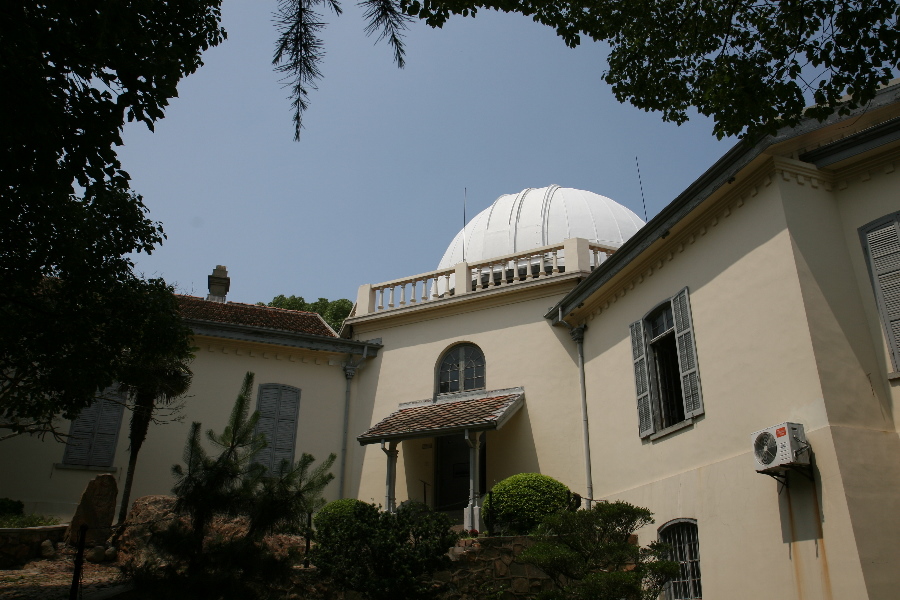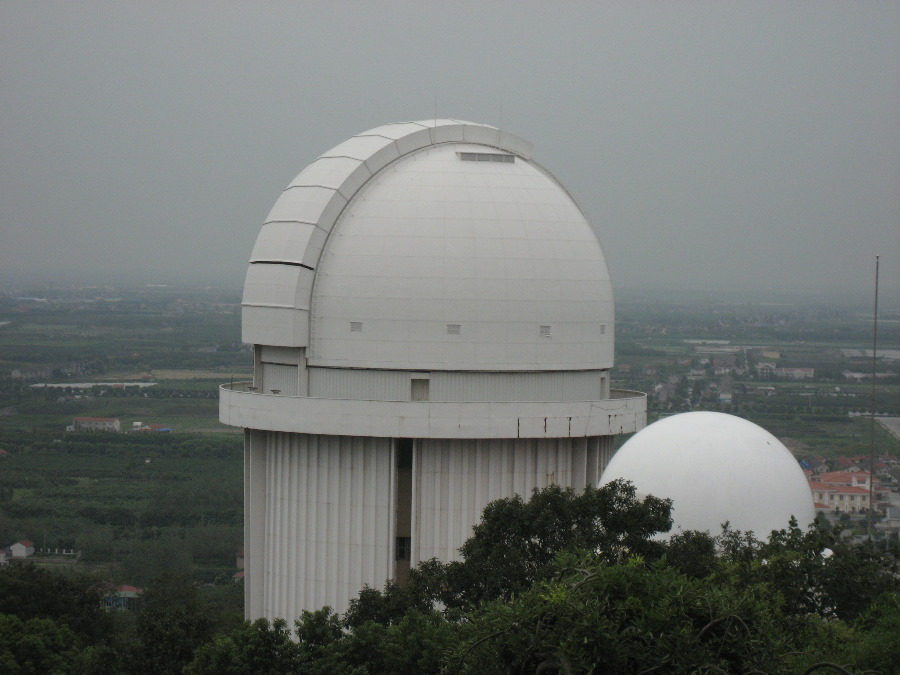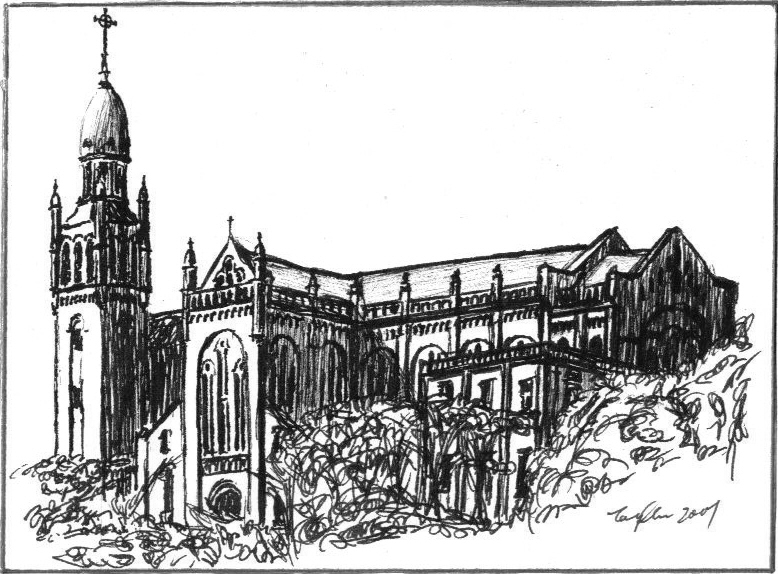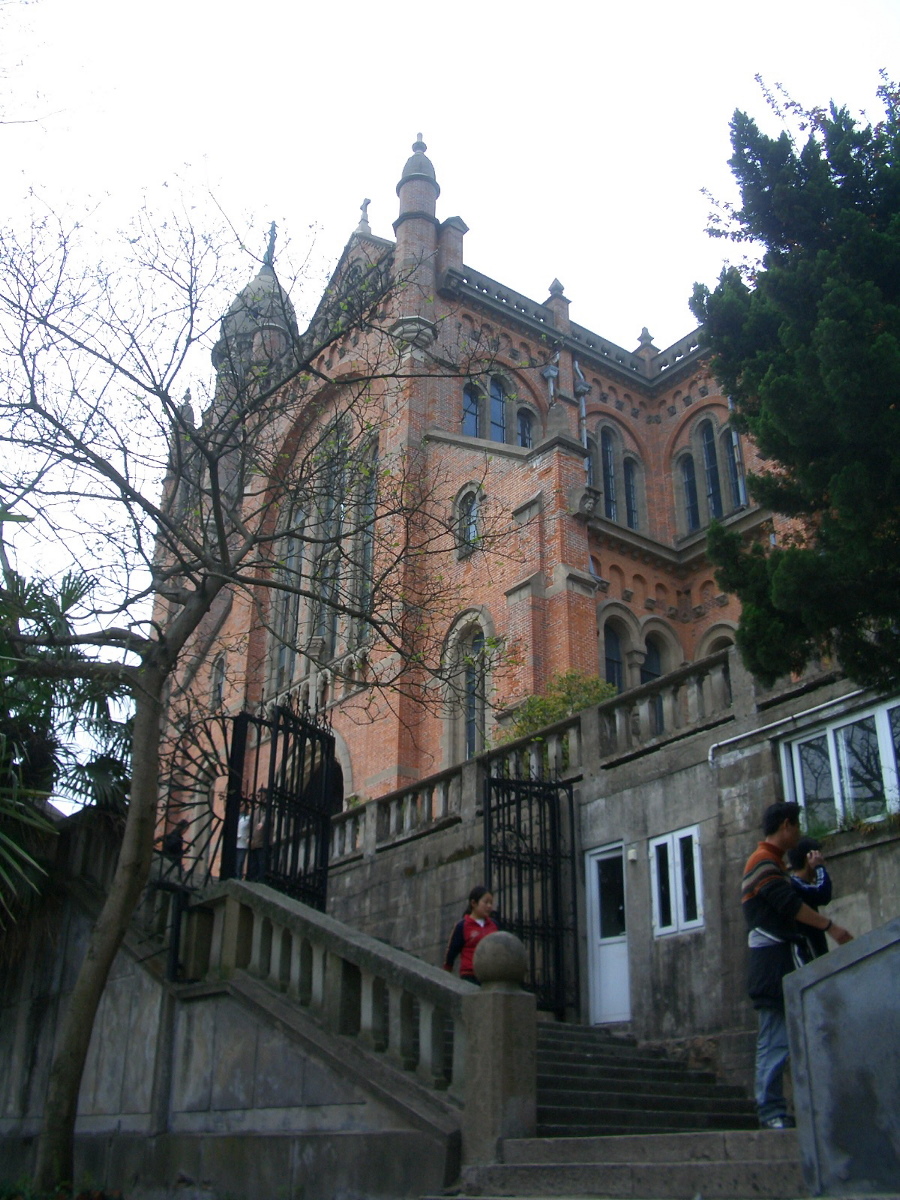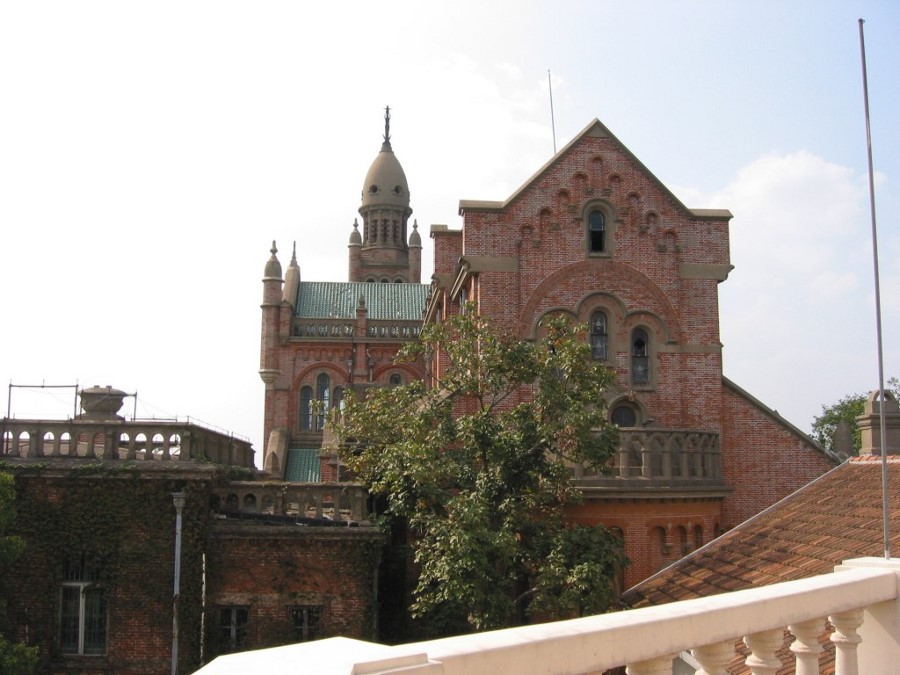|
|
||||||
|
31°5′41.98″N, 121°11′29.72″E ..
Sheshan, Zo-Se, Sta.Shanghai Observatory(former Jesuit Observatory) The Search for the Ionospheric Sounding Network in China
|
||||||
|
....
The telescope is located in the Sheshan area, about 40km west of Shanghai. The radio telescope has been in operation since 1987, and it is one of the five main facilities of the Chinese National Astronomical Observatory. The station is a member of the European VLBI Network (EVN), the International VLBI Service for Geodesy and Astrometry (IVS), and the Asia Pacific Telescope The telescope is located at longitude 121°11' 59" E and latitude 31°05' 57" N, 5m above sea level. Some parameters of the antenna are listed below:
The VLBI recording System:
There are three recording systems at the Sheshan VLBI station (VLBA, MKIV, and S2). Both thick and thin tapes are available for the VLBA and MKIV recording systems. The MKIV upgrade was completed successfully in 2000, and the Sheshan station has participated in the two-head recording test at 512Mbit/s carried out by the EVN organization in October 2001. Fringes were measured successfully on both head-stacks. The performance of the observing system is presently undergoing further improvement, and the MKV system will be available from mid 2004. The Sheshan station is also equipped with a Canadian S2 VLBI recording system, used for APT, VSOP, and other VLBI observations. In addition, hydrogen masers were recently made by SHAO. Leading Professor: Xiaoyu Hong Group Members:
Shanghai Astronomical Observatory,
All Rights Reserved
SOURCE: Shanghai
Astronomical Observatory
|
||||||
|
Observatory and Church ..
..
JasonHang, on February 25, 2007, said: Chinese Academy of Science,SHANGHAI astronomical observatory, SHESHAN workstation. It is founded by French Holy Joe in 1900. The observatory is equiped by a birefringent telescope which has a diameter of 40cm. 100 years ago. SHESHAN is the largest observatory in Far-east. Nowadays, because of its near urban areas location, SHESHAN is more used in education than in science observation. She Shan Basilica The She Shan Basilica (officially: Basilica of
Our Lady of She Shan, simplified Chinese: 佘山进教之佑圣母大殿;
pinyin: Shéshān jìnjiào zhī yòu shèngmǔ dàdiàn) is a Catholic
church in Shanghai, China. The name comes from its location on the western
peak of She Shan Hill, located in Songjiang District, to the west of Shanghai's
metropolitan area. It is the largest Christian church building in East
Asia and was at one time the destination of pilgrims from across Asia.
Sketch of Sheshan Cathedral
History The official name of the church is the Church of the Holy Mother in China. The first church on She Shan hill was built in 1863. During the Taiping Rebellion, Jesuit missionaries bought a plot of land on the southern slopes of the hill. A derelict Buddhist monastery had stood on the site. The remaining buildings were demolished, and a small building was constructed as living quarters for missionaries, and a small chapel. At the peak of the hill (where the Maitreya hall had stood), a small pavilion was built in which was placed a statue of the Madonna. In June 1870, unrest in Tianjin led to the burning of churches there. The Shanghai Jesuits prayed at the statue of the Madonna and pledged to build a church to her honour in return for her protection. Subsequently, construction of the church began. Wood was shipped in from Shanghai, and stone bought from Fujian. All material had to be ported to the peak by hand. The church was completed two years later. This first church was in the form of a cross, and incorporated features of both Chinese and Western architectural features. A veranda was placed outside the door, with ten columns. Eight stone lions were placed before the church. In 1894, several ancillary buildings were added. These included a chapel half-way down the hill, a shrine to the Sacred Heart, the Virgin Mary, and St Joseph. Fourteen Stations of the Cross were constructed along the path to the Church. In 1925, the existing Church was found to be inadequate, and it lagged far behind other churches in Shanghai in terms of size and ornamentation. The church was demolished and rebuilt. Because the Portuguese priest and architect (叶肇昌) was very stringent about the quality of construction, the whole project took ten years to finish, and the church was completed in 1935. In 1942, Pope Pius XII ordained the She Shan Cathedral a minor Basilica. In 1946, the Holy See crowned the statue of Our Lady of Zose (Zose being the Shanghainese pronunciation of She Shan) at the apex of the tower. After the Communist takeover in 1949, She Shan Cathedral was heavily damaged during the Cultural Revolution. The stained glass windows of the church, carvings along the Via Dolorosa, the statue atop the bell tower, and various other works of iconography were destroyed. In the 1950s, Ignatius Kung Pin-Mei the Roman Catholic bishop of Shanghai was arrested and imprisoned for over 30 years and the Chinese government put the basilica under the control of the Chinese Patriotic Catholic Association and Chinese bishops not recognized by the Vatican, and condemned by the papal encyclical Ad Apostolorum Principis. After the Cultural Revolution ended, the damage was gradually repaired. The statue was initially replaced with a simple iron cross, and a replacement statue was installed in 2000. On May 24, 2008 Pope Benedict XVI announced that he
had composed a special prayer for Our Lady of Sheshan.
Layout
The church occupies an area of 1 hectare and is about 70 feet (20 m) tall. It is a rectangular Latin cross in shape, and in classical Basilica form. Entrances are placed in the north, west, and south. The main door is in the south-west. The nave is 55.81 m long, 24.68 m wide. The ceiling is 16.46 high, and the church can seat 3000. The altar is placed at the eastern end, and is built of marble with gold trim and in-laid jade. The exterior is mainly granite, and part of the roof is covered in Chinese-style color-glazed tiles. The bell tower stands on the south-east corner. It is 38 m tall. At the top of its bell tower stands a 4.8m bronze Madonna and Child statue ("Our Lady of Zose", Zose being the Shanghainese pronunciation of "She Shan"). Other features The 14 Stations of the Cross are situated at the end of each zig-zag path up the steep hill leading to the church. At the mid level in an open square where there are two shrines, one in devotion to the Sacred Heart and the other to the Virgin Mary. Nearby is the She Shan Station of the Shanghai Astronomical Observatory. This was originally built by the Jesuits. Pilgrimage
Every May, the church becomes the destination for pilgrims who travel far and wide to make their annual pilgrimage at She Shan, praying the Way of the Cross, the Rosary and attending Mass at this holy site. Traditionally, many of the Catholics in the area were fishermen, who would make the pilgrimage by boat. This tradition continues among local Catholics, with the result that the creeks around She Shan are often crowded with boats in May. Currently, She Shan is the only active pilgrimage site for Roman Catholics in China. See also References
|
||||||
| FAIR USE NOTICE: This page contains copyrighted material the use of which has not been specifically authorized by the copyright owner. Pegasus Research Consortium distributes this material without profit to those who have expressed a prior interest in receiving the included information for research and educational purposes. We believe this constitutes a fair use of any such copyrighted material as provided for in 17 U.S.C § 107. If you wish to use copyrighted material from this site for purposes of your own that go beyond fair use, you must obtain permission from the copyright owner. | ||||||
|
|
